IP Pirates and Other Willful Infringers: Beware, the Supreme Court Eases Standards for Awarding Enhanced Patent Damages
June 14, 2016
By: Brian T. Moriarty and John L. DuPré
Hamilton Brook Smith Reynolds Alert
- Supreme Court eases standard for award of increased damages for patent infringement
- Overrules prior Federal Circuit Seagate standard as “mechanical” and “artificial”
- Ruling may bolster the use of opinions of counsel before undertaking potentially infringing conduct
In a unanimous decision in Halo Elec., Inc. v Pulse Elec., Inc., the Supreme Court overturned the cumbersome standards for awarding treble, or enhanced, damages for “willful” and “wanton” patent infringement set forth by the Federal Circuit in the Seagate decision in 2008. Under the old Seagate standard, a plaintiff seeking enhanced damages had to satisfy a two-part standard of conduct before the district court could even consider exercising its discretion and awarding enhanced damages for flagrant forms of patent infringement. The Court has now overruled those standards and allows for an award of enhanced damages at the discretion of the district court, but only in those instances where the infringement arises from “egregious cases of misconduct beyond typical infringement.”
Under Seagate, a successful plaintiff had to prove by clear and convincing evidence that the defendant’s infringement was “objectively reckless” and did not raise a “substantial question as to validity or non-infringement of the patent.” Next, the plaintiff would need to show, again, by clear and convincing evidence, that the risk of infringement was “either known or so obvious that it should have been known to the accused infringer.” Finally, the plaintiff would need to convince the district court to exercise its discretion and award enhanced damages up to treble damages. The standards for review of the district court’s decision on appeal were also exacting.
The Supreme Court reviewed the history of patent damages and observed that “enhanced patent damages are as old as patent law” and date back to 1793. Such damages were always intended to punish “wanton, deliberate and willful infringement,” as well as “bald cases of piracy.” In 1952 with codification of the modern patent law, Congress enacted section 284 of the Patent laws that allows for “punitive and increased damages . . . in the case of willful or bad-faith infringement.” The Court noted that section 284 does not contain the cumbersome standards for awarding enhanced damages adopted by the Federal Circuit. Instead, the statute simply states that the “Court may increase damages up to three times the amount assessed.” Thus, the Court rejected the Federal Circuit test and ruled that enhanced damages can be awarded based solely on the discretion of the district court, but, of course, only in unusual cases and not typical cases. Without limiting the types of conduct that might warrant an award of enhanced damages, the Court stated that “the sort of conduct warranting enhanced damages has been variously described in our cases as willful, wanton, malicious, bad-faith, deliberate, consciously wrongful, flagrant or – indeed – characteristic of a pirate.” The Court also rejected the “clear and convincing” standard set forth in Seagate and stated that the issues would be governed by a “preponderance of the evidence” standard.
The Court also took special note of the fact that, typical in tort cases, the culpability of an accused infringer’s conduct should be measured at the time the infringing conduct occurred. The Court observed that under the Seagate standard an egregious infringer could escape punishment by enhanced damages solely by an ingenious lawyer who mounts a credible defense at trial, even if the accused infringer was unaware of that defense at the time of infringement. But, the Court added, “bad-faith” intent, if any, should not be measured by how well the accused infringers’ lawyers did in court. It should be measured based on what was known or intended by the accused infringer at the time of the alleged infringement.
The Court denied the respondents’ contention that the Seagate willfulness test was supported by the later enactment of 35 U.S.C. 298, which states that failure to obtain an opinion of counsel may not be used to prove willful infringement. Although not specifically discussed by the Supreme Court, the Ruling may bolster the practice of obtaining written opinions of counsel as to non-infringement or invalidity to demonstrate good faith intent on the part of an alleged infringer before launching products or otherwise engaging in conduct that could be subject to a patent infringement action.





